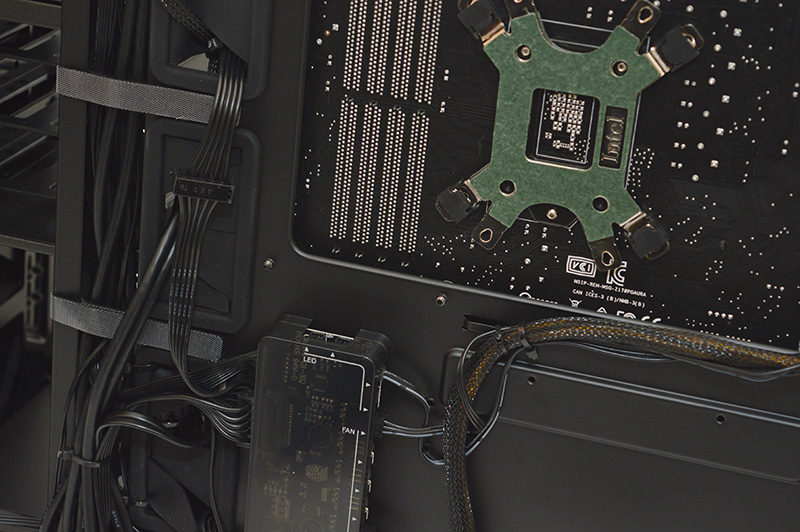Eclipse Computers Nebula VR GTX 1080 Gaming PC Review
John Williamson / 8 years ago
A Closer Look
This particular build is based on a stealth black theme which looks very professional and should appeal to a wide range of tastes. For those who enjoy a more ostentatious appearance, there’s no need to fear because the motherboard and GPU can be configured to display a whole host of vibrant colours as well as numerous transitional effects. The neutral colour scheme is a sensible strategy because it caters to those who enjoy a more subtle approach and the lighting elements allow you to mould the system around your favourite colour scheme.
The Cooler Master MasterCase Maker 5 chassis is a work of art and contributes to the elegant styling. Not only that, the case has an innovative layout, loads of storage options and an ample supply of dust filters. Personally, I think it’s a great choice for this system although the slightly cheaper MasterCase 5 would have been ample. The only gripe I have is the lack of a removable power supply cover which would have improved the cable management opportunities. On the other hand, the cabling is difficult to see and it doesn’t seem to have caused any issues.
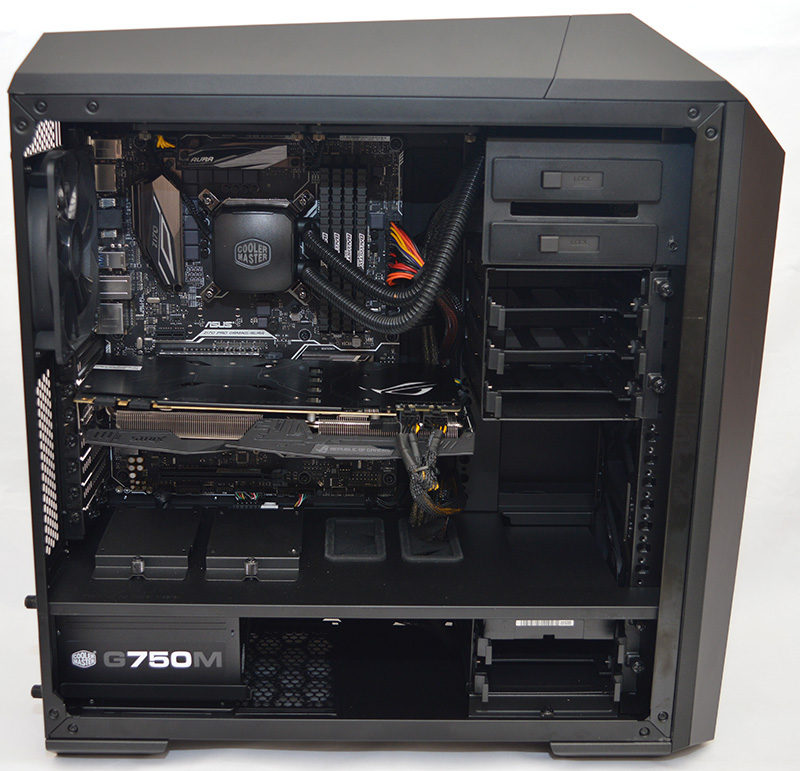
By default, the graphics card cycles through the entire colour spectrum which greatly enhances the system’s aesthetic qualities. The ROG logo positioned on the backplate really shines once the system is powered on and a joy to watch as the colours shift. Also, the motherboard employs Asus’ Aura lighting system and emanates light from the edge. This combines with the GPU’s lighting rather well and creates a sense of synergy. As you can see, the Cooler Master CPU block lights up in an attractive fashion and can be easily seen even when the side panel has been closed.
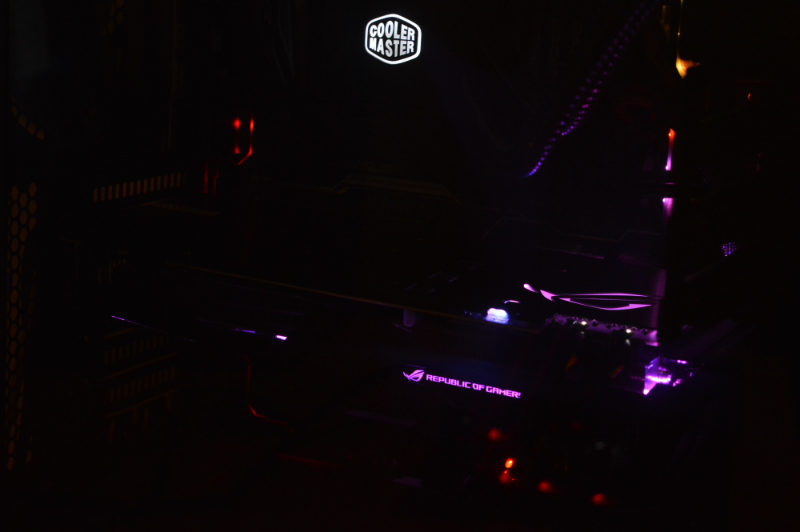
The system contains an integrated lighting strip which illuminates in a red hue and makes it easier to see the main components. While it would have been advantageous for the strip to support multiple colours, it’s a good addition and I warmed to the red colour within a short space of time.
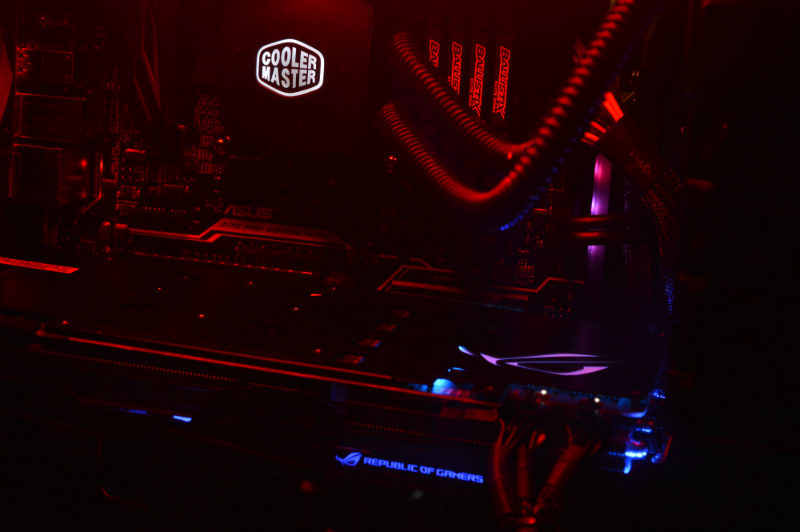
Cooler Master’s G750M power supply utilises a semi-modular design and compact form-factor. Additionally, the PSU has an 80+ Bronze efficiency rating and innovative circuit design to aid heat dissipation. There’s also a double layer EMI filter, custom 12V to 3.3V and 5B module and attractive print which coincides with the system’s jet black theme.
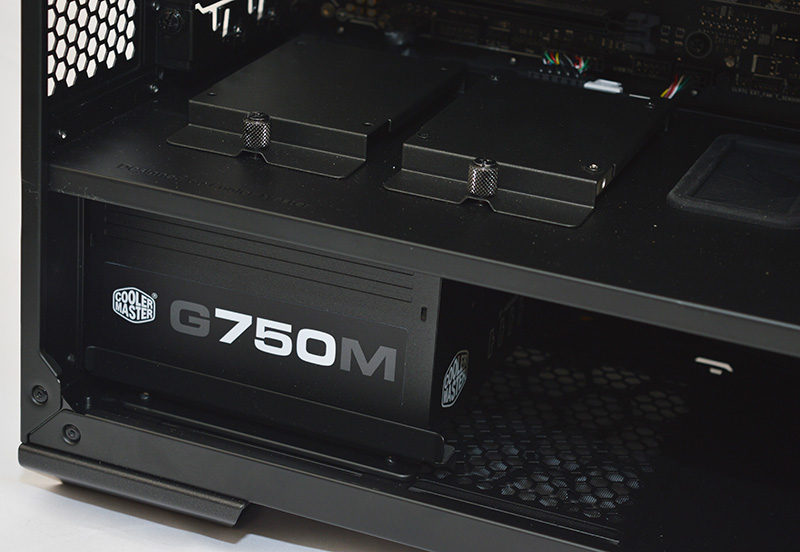
Unlike many system integrators who focus on budget secondary storage devices, Eclipse Computers decided to include a 2TB Western Digital Black drive. This is one of the highest performing 3.5-inch mechanical drives on the market and capable of reaching pretty impressive sequential read/write speeds. As you can see, the drive easily slots into place, and there’s loads of room to add additional storage devices in the near future.
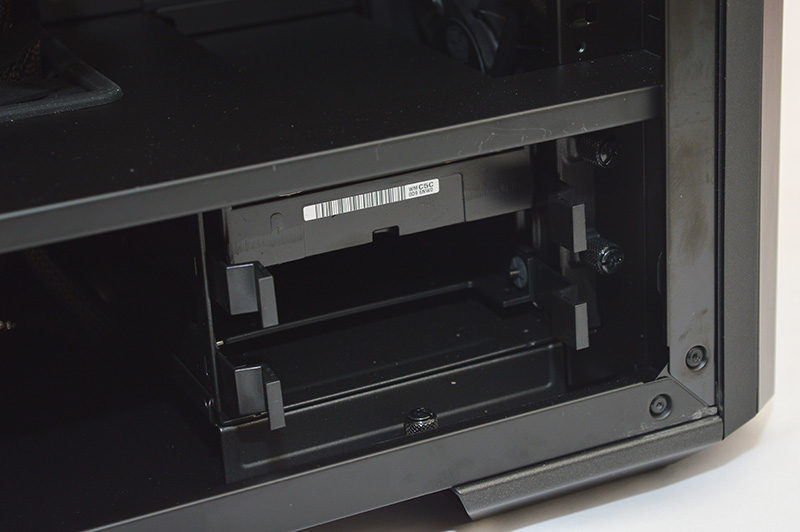
The chassis’ front portion features distinctive lines and a smooth, angular design. This classic, minimalist styling is wonderful and evokes a luxury feel. Unfortunately, the front stickers do not correspond with the system’s appearance and should have been left in the component boxes. While the Eclipse Computers logo is perfectly fine, the Intel and ROG badges are an unnecessary addition. These extra stickers combine to create a rather messy and dated finish which distract your attention away from the lovely Cooler Master logo. Evidently, you can just remove the stickers and it’s not something which permanently detracts from a premium PC experience.
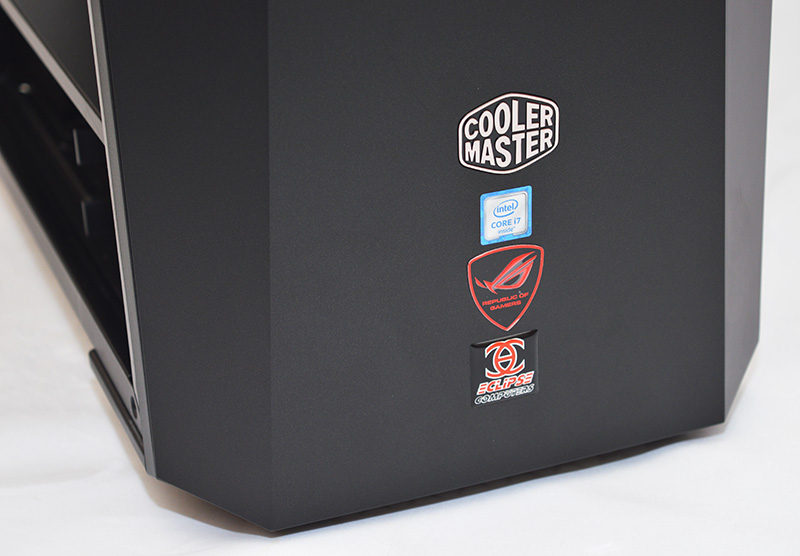
Another intriguing aspect of this system is the ASUS ROG front bay which allows you to monitor the CPU frequency, thermal readings and adjust fan speeds. While I’m not usually fond of huge front bays, the ROG model is sublime and I really like the dials which mimic a glamorous hypercar. On another note, the display outlines the motherboard’s post status and the current time. There’s also a USB port and high-fidelity audio jacks.
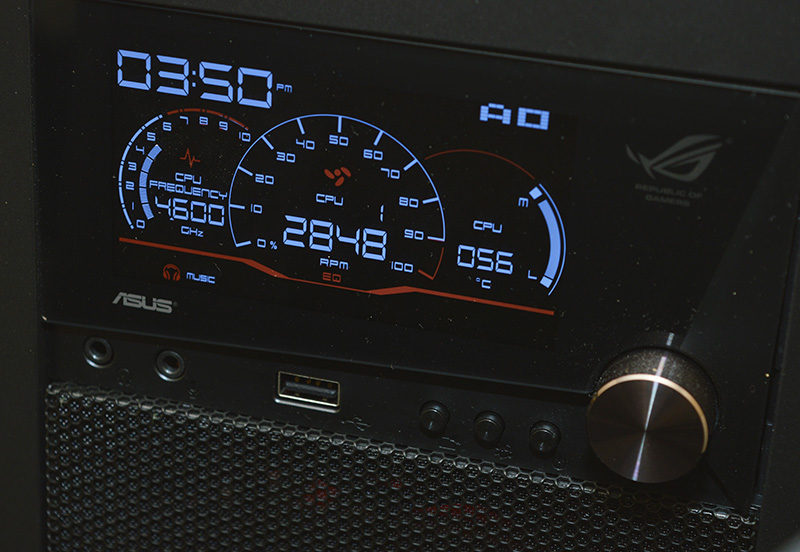
Unfortunately, the beautiful display is completely covered by the chassis’ front cover unless you pull the plastic section towards you. This is a baffling decision and a major error which shows a lack of planning. Clearly, the wrong chassis has been selected or the screen should have omitted instead. I’m really disappointed by this blunder and expected a member of staff to notice this glaring issue before the system’s design was finalised. On a more positive note, the chassis’ USB 3.1 Type-C connectivity is most welcome and illuminated labels for the various connections proves to be quite useful.
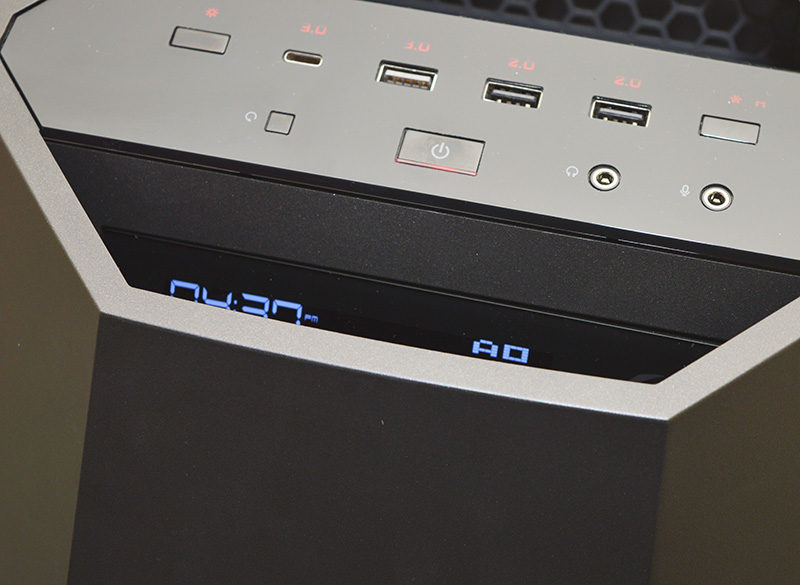
The system’s CPU liquid cooling solution revolves around a matte black square block and FEP tubing. Frankly, I’ve never cared much for FEP tubing from an aesthetic standpoint and prefer the braided finish on alternatives products such as the Corsair H110i GTX. This is just a personal viewpoint though and the black colour compliments the memory modules. Speaking of memory, it’s interesting that four DIMMs have been used to provide in a 4x4GB configuration. If you’re not aware, Skylake only supports dual-channel which means the memory performs the same as a kit with two modules. On the one hand, this limits the upgradability but the fully populated DIMM slots look rather special.
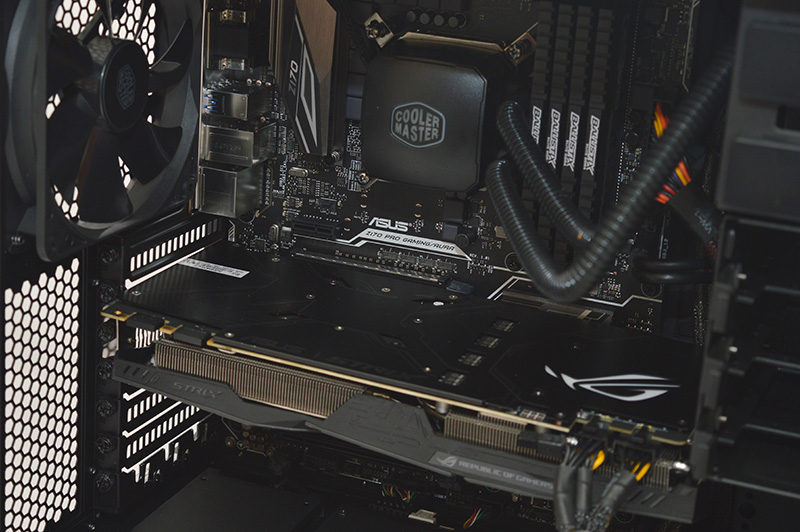
Here we can see the USB 3.0 header, 24-pin connector and 8-pin power cable have been routed in a proficient way creating a very tidy build. Also, the motherboard’s heatsinks employ a spectacular design which helps the system to stand out. The Asus STRIX graphics card‘s DirectCU III cooler is extremely quiet thanks to the large heatsinks utilising a dense fin array. The GPU is covered with a striking pattern and the STRIX branding has been implemented quite nicely without appearing too overpowering. Also, the graphics card cabling is effectively managed using a tight cable run and single zip-tie.
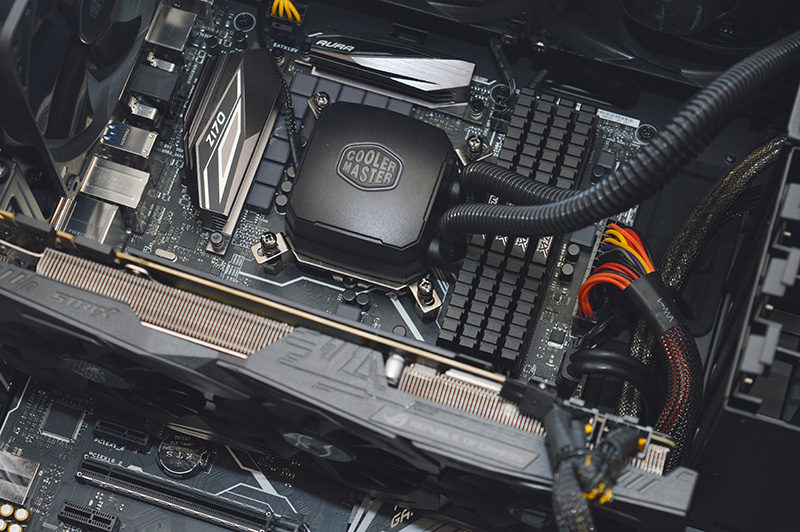
The system’s cable management has been completed to a good standard and I didn’t encounter any problems when trying to reattach the side panel. As you can see, the chassis’ velcro straps are useful to couple a large number of cables together in a flat formation. While there’s still the odd protruding cable, it’s not enough to become problematic and everything is kept relatively tidy. Thankfully, the cabling didn’t rely solely on the velcro straps and a decent supply of zip-ties were used. Also, the cables are routed in a logical, thoughtful arrangement and have the shortest possible cabling run.
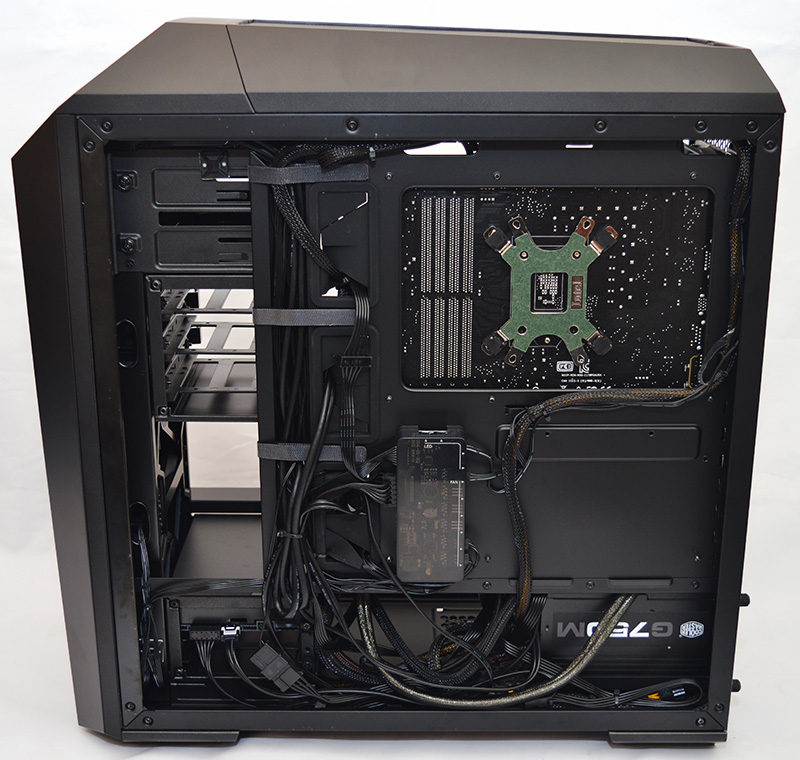
Near the power supply. any excess cables are held down and kept away from the main chamber. Upon closer inspection, this area doesn’t look that neat and the cables appear to cross over each other in a jumbled direction. Saying that, this isn’t a huge issue because it doesn’t impair airflow it’s quite difficult to achieve straight cable runs while making the section around the power supply perfect.
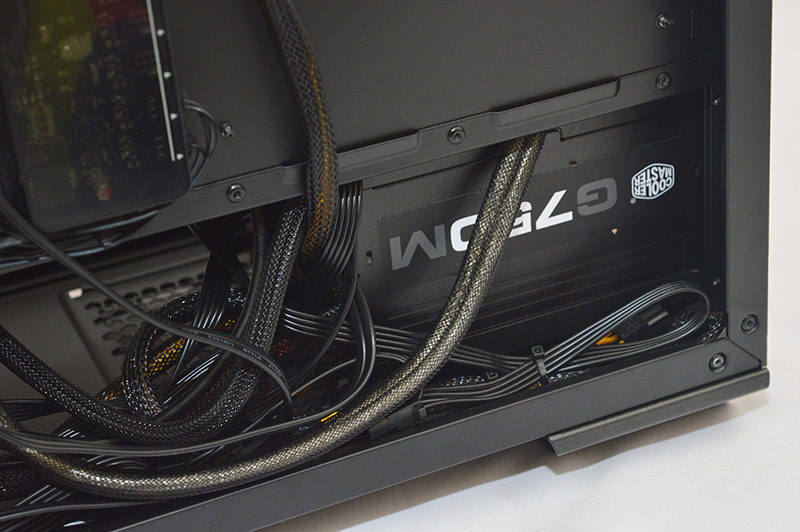
The hard drive cables are routed quite well and there’s loads of space around this area to easily manage the cables for additional storage devices. Also, the main cluster of cables including the USB 3.0 and front panel are grouped together in a proficient way which minimises clutter around the HDD tray.
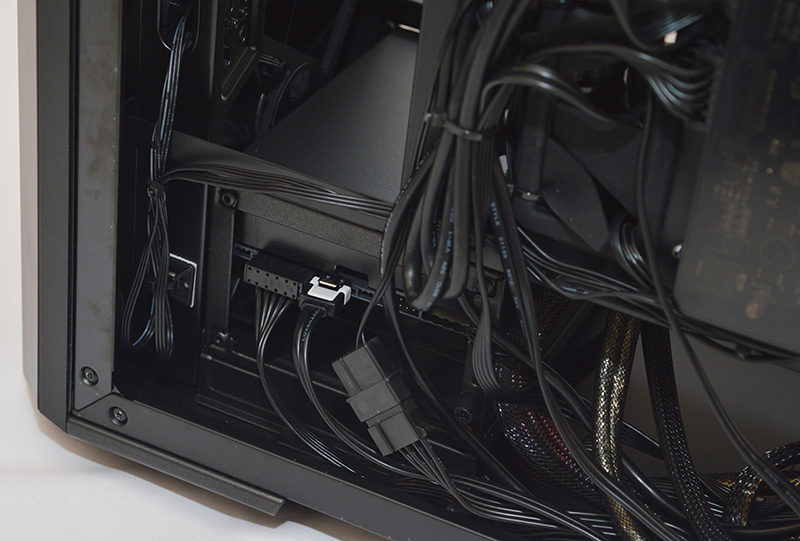
To maintain a clean finish, Eclipse Computers deployed a PWM fan control hub which keeps all the fan cabling in the back section and well out of view once the side panel has been shut. Not only that, the hub can power LED strips and is a really versatile piece of hardware. Here we can see the 8-pin EPS is properly routed using the clips around the chassis and through a cable management hole.
